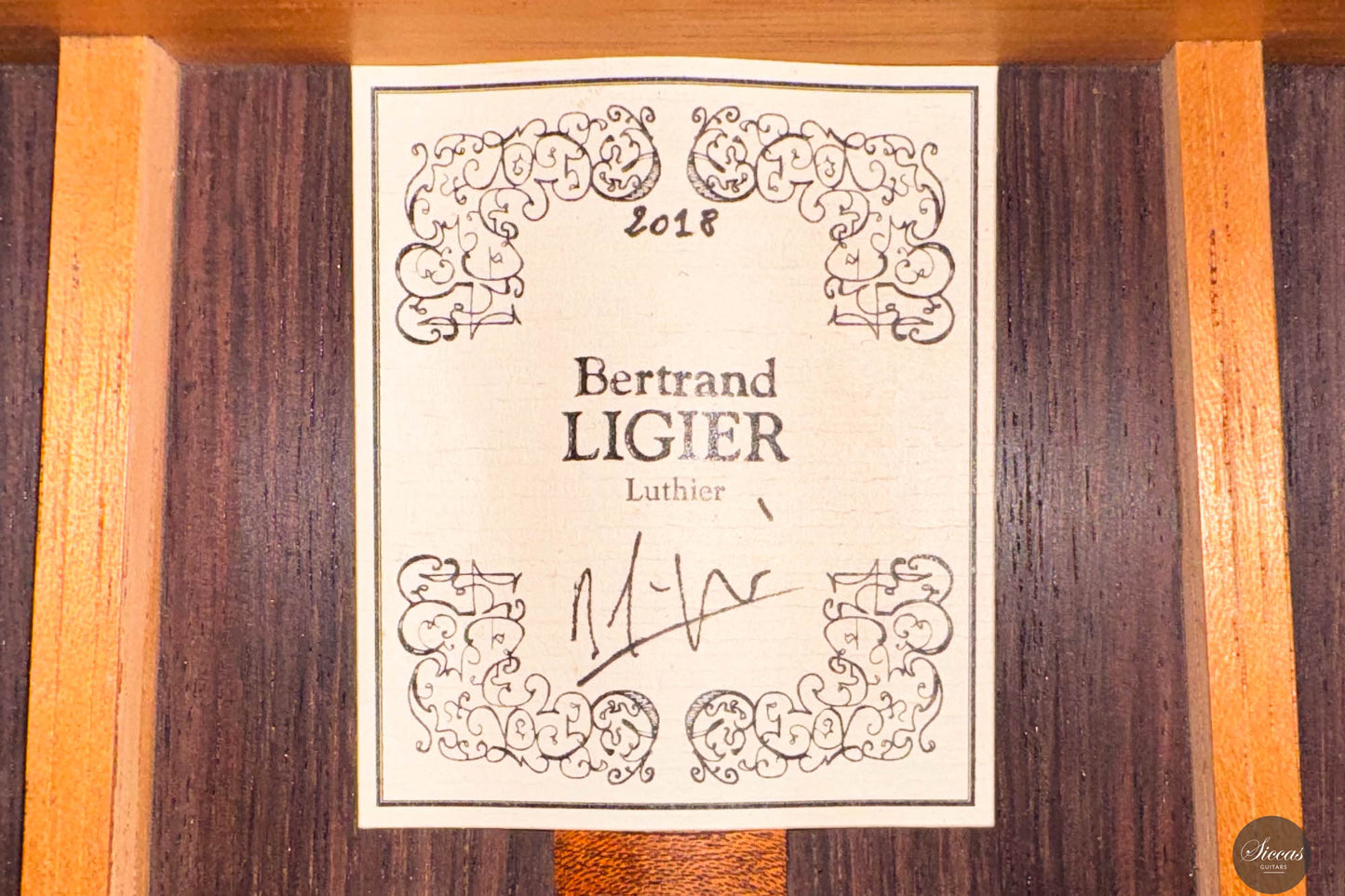Bertrand Ligier - 2018 - No. 67
Bertrand Ligier - 2018 - No. 67
Details
Details
Overview
Overview
Shipping important note
Shipping important note
Delivery times are typically reliable and most instruments arrive within the estimated timeframe.
Should any unexpected delay occur, our team will keep you informed and provide support at every step. For all shipping details and exceptions, please see our Shipping Policy.
Details about GPSR
Details about GPSR






















Video overview


More details about the guitar
About the luthier
Bertrand Ligier is a French luthier based in Connaux, near Avignon, in southern France. His guitars follow the French tradition and are crafted with great finesse. Particular attention is given to the French polish, and the sound qualities follow those of Dominique Field and Daniel Friederich’s guitars. Bertrand has adopted some aesthetic details from the history of guitar making and has made them his own with outstanding refinement and taste. For instance, the shape of the head as well as the illuminations and the size of the label, are reminiscent of Robert Bouchet’s. The rosette is of the utmost delicacy, and the intricate mosaic pieces that compose it are assembled with skillful precision.About the guitar
The 2018 Bertrand Ligier Guitar No. 67 exemplifies the finest qualities of French lutherie, blending exquisite craftsmanship with outstanding tonal performance. This remarkable instrument reflects Ligier’s dedication to the French guitar-making tradition, featuring a meticulously crafted rosette that subtly pays homage to Daniel Friederich’s iconic designs, with details precise to the tenth of a millimeter. The central mosaic’s vibrant colors and intricate patterns create a captivating visual story that honors the legacy of French luthiery. Beyond its aesthetic beauty, this guitar offers an exceptional sound, characterized by balance, volume, and elegance. Each note resonates with remarkable sustain and clarity, allowing for a rich and expressive playing experience. The double-sided construction enhances the instrument’s resonance and projection, making it perfect for filling a concert hall. Despite being a pre-loved instrument, it remains in excellent condition with only minor playing wear, ensuring its continued performance and visual appeal for years to come.Regular care extends the life of the instrument
Even with careful use, a classical guitar may gradually change in appearance or respond to unstable storage conditions. Have a close look at your guitar regularly and be attentif to changes. If your instrument is suffering from its environement, it will let you know.
Protect Your Guitar: Handle with Care
Be mindful when touching your instrument with greasy or unwashed hands: any skin contact is a small attack on the varnish. Of course, a guitar is made to be played, but taking a few precautions helps preserve its beauty: wash your hands before playing, wear long sleeves, and avoid unnecessary direct skin contact with the body of the instrument.
Pro tip: Avoid playing with a button-up shirt, heavy jewelry, or a belt, as these can scratch the guitar. Also, make sure your guitar case is free of any objects that could damage the instrument during storage.
String care
A good habit to adopt is wiping down your strings briefly after each playing session. This small action significantly extends their lifespan and helps maintain a consistent, comfortable feel under your fingers.
Most importantly, clean strings are essential for keeping your instrument in tune. Corrosion, sweat, and dust can affect the uniformity of the strings and interfere with accurate tuning across the entire fingerboard.
Pro tip: If you're having trouble getting your guitar in tune, it might be time to change the strings. A useful test is to compare the pitch of the 12th fret harmonic with the fretted note at the 12th fret; if there's an unusually large gap between them, your strings may have lost their integrity and should be replaced.
Keep Your Shellac Finish Shining!
Got a guitar with a shellac (French polish) finish? Here's a simple trick: Take a clean microfiber cloth and gently breathe on the surface to create a light mist. Then, softly rub to remove fingerprints, sweat, and grease. That’s usually all it takes to keep it looking great, no products needed!
Pro tip: Every few years, treat your guitar to a check-up with a luthier to keep it in top shape.
Storing Your Guitar: Climate Matters
Your guitar can safely stay outside its case, as long as the surrounding environment maintains 42–55% humidity and a temperature between 18–25°C.
Keep in mind that humidity levels can still fluctuate inside the case, especially during seasonal changes.
- Too much humidity may cause overtightened strings and a dull tone.
- Too little humidity can lead to a bulging top, string buzz, or even cracks.
Avoid placing your guitar near radiators, air conditioners, or windows with direct sunlight.
Pro tip: Always close your guitar case while playing. This helps preserve a stable microclimate inside the case, so your instrument is protected the moment you put it back in.















































